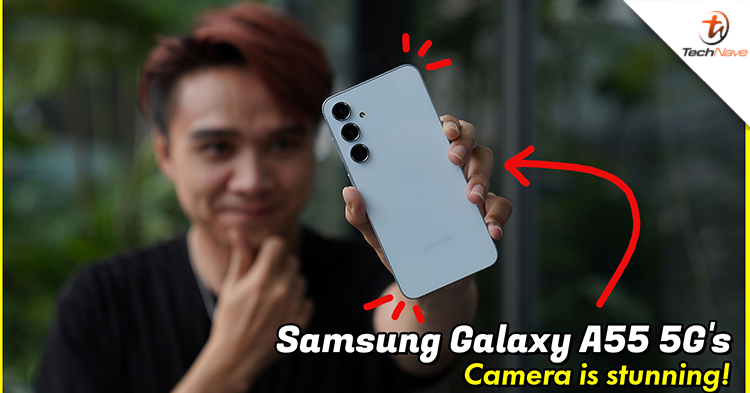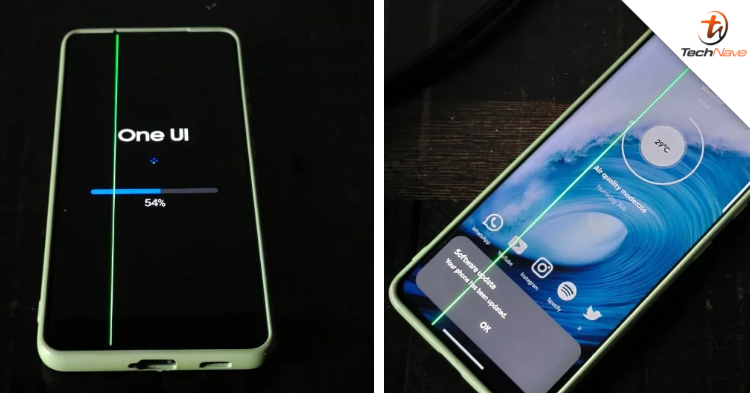
The 1D series cameras are optimized for fast operation and have traditionally been the camera of choice for sports professionals who shoot with Canon. 1D series use an APS-H format sensor (28.1x18.7mm), which is larger than APS-C and so can yield higher image quality, but is smaller than full frame, which means that the file size is smaller and the reflex mirror can be smaller and lighter. This enables the camera can operate at higher speeds (10 frames per sec). Like other professional 1D and 1Ds series cameras, the EOS 1D MkIV has an integrated grip with a second set of controls for vertical shooting and is weather-sealed for operation outdoors in the rain. It also utilizes a high capacity battery pack and has high strength construction to make it rugged enough to stand up to hard professional use.
Canon EOS 1D Mark IV - Design & Build:
The EOS 1D MkIV is a relatively large and heavy camera. The integrated grip and high capacity battery significantly increase the size of the camera body when compared to an EOS 5D MkII and it's much bigger and heavier than something like a digital Rebel T2i. At just over 2.5lbs in weight it's also pretty heavy - and that weight doesn't include a lens!
Of course the size and weight are a consequence of the sturdy construction and other features required for serious professional use. The grip is integrated to add strength and reliability. With an integrated grip there are no worries about body-to-grip contacts or providing a place where dust and moisture can enter the camera - plus there's no weak mechanical coupling to fail if the camera is dropped or otherwise abused. The chassis of the Canon 1D MkIV is all metal and is environmentally sealed using 76 different rubber seals and gaskets. All of this adds to the size and weight of the camera.
Canon EOS 1D Mark IV - Controls:
The control layout of the Canon EOS 1D MkIV is similar to that of other Canon EOS 1 series cameras (including film cameras). Operational mode is set via push buttons and the main control wheel rather than the dial used by prosumer models. Again this is related to durability and reliability.
Canon EOS 1D Mark IV - Viewfinder:
The whole viewfinder assembly is pretty much identical to that used in the 1D MkIII. It has 100% coverage with approximately 0.76x magnification and a 20mm eyepoint. A dioptric adjustment of -3 to 1 diopters is built in and there is an eyepiece shutter to block off light during long exposures. The standard focusing screen is the Laser-matte Ec-C IV. It provides a clear image for easy focusing, excellent brightness, low "grain" and a natural looking background blur.
The viewfinder display has two parts, one horizontal display below the screen and the other vertical and to the right of the screen. The vertical display shows metering (including flash metering) and exposure compensation in 1/3 stop steps from +3 to -3 stops. It also shows indicators for JPEG and RAW file recording, maximum burst count and battery level. The horizontal display shows the usual EOS parameters such as shutter speed, aperture, ISO, highlight tone priority, shots remaining, flash status, metering mode, focus confirmation and white balance correction.
Canon EOS 1D Mark IV - LCD:
The Canon EOS 1D MkIV features a 3-inch LCD monitor with approximately 920,000 dots (VGA resolution), a wide (160°) viewing angle, high brightness and low power consumption. Colors and color reproduction have been improved over the old EOS-1D Mark III and more natural-looking images closer to the sRGB color space are obtained.
The protective cover over the LCD has been changed from plastic to reinforced glass to prevent any force applied to the protective cover from reaching the LCD panel. The new cover is also much more scratch resistant. The Canon EOS-1D Mark IV's LCD screen has an anti-reflective and smudge-resistant coating and with internal technology which also reduces internal reflections. This results in a higher contrast image which is easier to see, even outdoors in bright sunlight.
Canon EOS 1D Mark IV - ISO and Noise:
The Canon EOS 1D MkIV has an ISO range of 100-12,800 without expansion. With expansion enabled via a custom function, there are additional ISO settings of 50 (L), 25,600 (H1), 51,200 (h2) and a remarkable 102,400 (H3). There's also an auto ISO function ,customizable with the photographer's choice of upper and lower limits between ISO 100 and ISO 12800. Auto ISO functions in manual mode, so the photographer can set shutter speed and aperture and the camera will select the appropriate ISO setting for optimum exposure.
The actual photosensitive area of the Canon D MkIV pixels is the same as that of the 1D MkIII, despite the higher pixel density (16MP vs. 10.1MP). In addition a gapless microlens system and a higher transmission Bayer matrix color filter further improve light capture. The result is that in spite of a higher pixel density (and therefore a smaller pixel size), the Canon 1D MkIV shows a lower noise level than the 1D MkIII.
Overall I'd say that the noise level of the Canon EOS 1D MkIV is pretty similar to that of the EOS 5D MkII through ISO 6400 and is at least one stop better than the noise level of the EOS 7D. At ISO 12800 and 25600 the Canon 1D MkIV shows the lower noise than the 5D MkII.
Canon EOS 1D Mark IV - Flash:
Like all the professional 1 series EOS cameras, the Canon EOS 1D MkIV doesn't have a built in flash. There are probably several reasons why a pop-up flash isn't used. First lack of space in the pentaprism area and second, better weather-sealing since a pop-up flash gives more areas for water and dust penetration. A pop-up flash is also susceptible to damage so a sealed pentaprism unit leads to a tougher camera. There is the standard EOS hotshoe and a PC flash connector. Maximum sync voltage is 250v and maximum sync speed is 1/300s for small compact flashes. Sync speed may be slower with large studio flash systems. Flash exposure microadjustment is provided.
Canon EOS 1D Mark IV - Autofocus:
Autofocus has been something of a thorn in the side of Canon when it comes to the 1D series cameras. More specifically the EOS 1D MkIII, which preceded the EOS 1D MkIV had some problems. While many users were delighted with the AF and had no problems, others found fault with operation with AF tracking of moving subjects under certain sets of conditions. Canon offered repairs on the sub-mirror assembly of some cameras which had a problem and several firmware updates were issued to address AF tracking issues. Canon also recalibrated the AF system on some cameras returned to them for AF tracking problems.
The 1D MkIV AF system is quite complex. It has 45 zones, 39 of which can be manually selected. 19 zones are used when the camera auto selects the AF point, All 39 zones have cross sensitivity. The center AF zone is a cross type with vertical AF sensitivity up to f4 and horizontal sensitivity up to f/8. That means that lenses up to f/8 (e.g. f/4 with a 2x TC) can be autofocused using the center AF zone (horizontal sensitivity only). The other AF zones have vertical sensitivity up to f/2.8 and horizontal sensitivity up to f/5.6, which means they act as cross sensors for lenses f/2.8 and faster and horizontal sensors for lenses slower than f/2.8.
Canon EOS 1D Mark IV - Metering:
The Canon EOS 1D MkIV uses the same 63-zone metering sensor as the 1D MkIII but different firmware is used to optimize correlation with the 45 AF zones of the 1D MkIV. The usual metering modes are available: Evaluative, Partial (13.5%), Spot (3.8%) and Center-weighted averaging. The evaluative metering algorithm of the 1d MkIV has been tweaked for more accurate results. The E-TTL II flash metering algorithms have also been tweaked for better exposure by using distance information to minimize the influence of the subjects clothing color, size etc.
Canon EOS 1D Mark IV - Live View:
In live view mode focus via contrast detection or phase detection is possible. Phase detection ("Quick" AF mode) requires the mirror to be flipped up and uses the focus system that is used for still images, but it is fast and accurate. Contrast detection ("Live"AF mode) is done using the live image and does not require the mirror to flip down but it can be rather slow . A face detection mode is also available, which also uses contrast detection. The AF zone used for contrast detection can be user selected if desired.
Canon EOS 1D Mark IV - Video:
The Canon EOS-1D Mark IV has excellent "broadcast quality" video capture. Video recording can be stopped and started using a single button, though there is no dedicated video button as there is on the EOS 7D. On the Canon EOS 1D MkIV you have to first select the "movie" option from the Live View menu. Then you can start and stop video using the FEL (flash exposure lock) button. Video can be viewed directly on compatible HD-ready TVs via the mini HDMI output. Any Canon EOS compatible lens can be used and if the lens has image stabilization, IS can be used during video recording. Due to the file system used on the memory cards, the maximum clip length is 4GB, the same as the maximum singe file size on any FAT 32 formatted volume. When shooting at lower resolution, clip length is limited to a maximum of 30 minutes, even if the file is under 4GB. 4GB is about 12 minutes of HD video or about 24 minutes of VGA video.
Video can be captured at full 1920 x 1080 resolution at frame rates of 24 (23.976), 25 or 30 (29.97) frames per second, for up to 4GB per clip. Movies are saved as MOV files and can be viewed in Full HD with HDMI output. Other recording sizes include HD at 1280 x 720 (50/60 (59.94) fps) or SD/VGA at 640 x 480 (50/60 (59.94) fps). The EOS-1D Mark IV has a built-in microphone for simple mono recording and stereo sound can be recorded through a self-powered external microphone.
Canon EOS 1D Mark IV - Peripheral Illumination Correction:
While Canon has offered peripheral illumination correction (also known as vignetting correction) in DPP when doing conversions from RAW image files for quite a while, the Canon EOS 1D MkIV can apply the same corrections to in-camera JPEGs when certain Canon lenses are used. The camera has a database of about 20 Canon lenses. The Canon OS Utility software can be used to check which lenses are in the database and to add others for which the data is available.
Canon EOS 1D Mark IV - Self Cleaning Sensor:
The sensor cleaning system of the Canon EOS 1D MkIV includes a “fluorine coating” on the low pass filter. This is said to provide “better dust resistance”. The sensor uses an ultrasonic shaking mechanism to shake any dust particles off the low pass filter when the camera is turned on and off. The position and size of any dust stuck on the sensor can also be saved as reference "dust delete data" and this data can be used for removal of dust spots using post processing with Canon's DPP software.
Canon EOS 1D Mark IV - Memory Cards:
The Canon EOS 1D MkIV can use either CompactFlash (CF) or Secure Digital (SD/SDHC) memory cards. The 1D MkIV can take advantage of the extra speed of UDMA 6(Ultra Direct Memory Access mode 6) enabled cards. The ability to use UDMA 6 means that the 1D MkIV can take full advantage of the fastest cards available. Currently the fastest cards are rated at 90MB/s but the 1D MkIV will be able take advantage of cards rated at up to 133MB/s when they become available. I tested the Canon EOS 1D MkIV using a 90 MB/s (600x) UDMA 6 Sandisk Extereme Pro 16GB CF card and I had no problems with performance, including recording HD video.
Canon EOS 1D Mark IV - Battery:
Canon's standard testing suggests that the battery should be good for about 1500 shots at 73°F or 1200 shots at 32°F. In Live View mode those numbers are significantly reduced to 270 and 230 shots respectively. In video mode the battery should be good for about 2h 40m of shooting at 73°F (though there is a 30m or 4GB limit--whichever comes first--on any single video clip).
Conclusion:
It's built to a standard to survive hard professional use while delivering images of outstanding quality under adverse conditions. It can shoot at 10 fps and in light levels so low that other cameras would yield images that were mostly noise. I found the autofocus to be fast and accurate and AF tracking of moving subjects was the best I've yet seen. It can also shoot broadcast quality 1080p HD video when called on to do so. It is a large, heavy and complex camera and a thorough reading and understanding of the manual is required to extract the maximum performance via its many customization options (there are 62 custom functions, each of which has from 2 to 4 options). This is not a camera for a beginner, but it is a camera that's capable of yielding outstanding results in the hands of a professional.
















COMMENTS